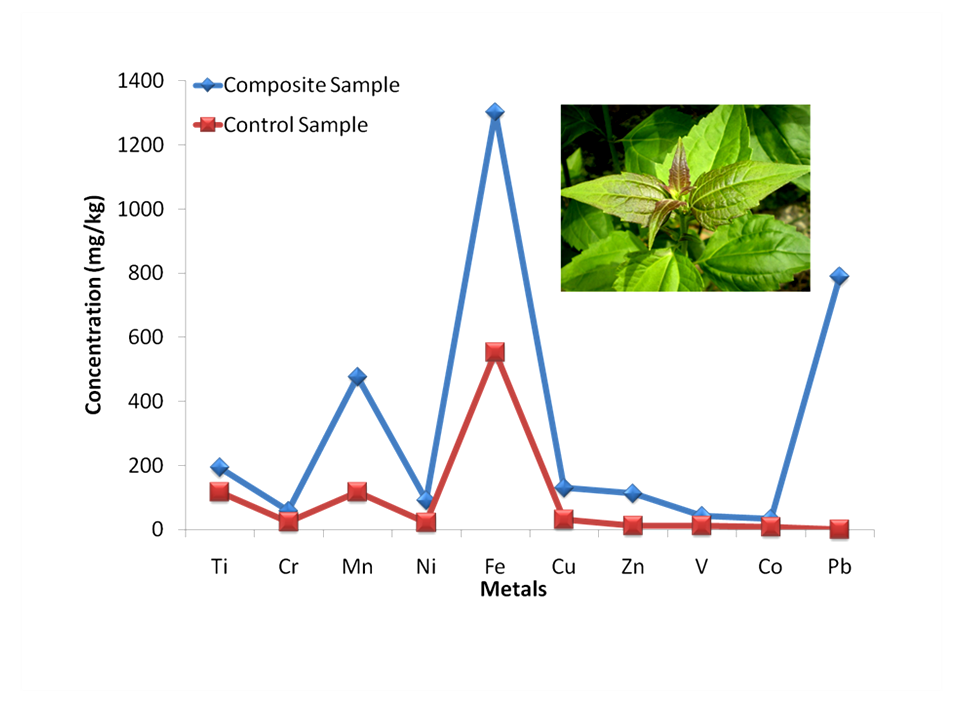Applied Research Frontiers
Title
Phytoremediation Potential of Chromolaena Odorata in Heavy Metal Polluted Environments
Authors
Nworu Jerome Sunday,*a Amuka Johnpaul Onyenezi,a Asionye Ezenwa Isdoreb and Anyichie Ifeanyi Kennetha
aDepartment of Chemistry, Nigeria Maritime University, Okerenkoko, Delta State, Nigeria.
bDepartment of Marine Environment and Pollution Control, Nigeria Maritime University, Okerenkoko, Delta State, Nigeria.
*Corresponding author E-mail address: jeromenworu@nmu.edu.ng (Nworu Jerome Sunday)
Article History
Publication details: Received: 29th September 2021; Revised: 22nd November 2021; Accepted: 28th December 2021; Published: 11th January 2022
Cite this article
Nworu J. S.; Amuka J. O.; Asionye E. I.; Anyichie I. K. Phytoremediation Potential of Chromolaena Odorata in Heavy Metal Polluted Environments. Appl. Res. Front., 2022, 1(1), 7-10.

Abstract
Plants ability to mop up toxic metals, which is highly non-destructive remediation process encapsulated in phytoremediation has been studied. The use of weeds to take up toxic and heavy metals from contaminated soils and water environments are nature driven. Chromolaena odorata selected on the basis of its invasiveness and survival in extreme harsh conditions in almost all soils as well as its seemingly non-vegetative use in the Nigerian environment was evaluated using X-Ray Fluorescence Spectrophotometer (XRF) to investigate its heavy metal accumulating potentials. The results showed a high potency for heavy metal accumulation in the order; Fe >Pb>Mn>Ti> Cu > Zn > Ni > Cr > V > Co with lead (Pb) having the highest percentage up-take (100 %) and titanium (Ti) the least (39.8 %) compared with the control. Siam weed is therefore recommended for phytoremediation of heavy metal polluted environments and for the phyto-extraction of the metal in addition to its perceived medicinal properties. This study is aimed at expanding the glossary of potential plant sources for pollution control and environmental sustainability.
Keywords
Pollution control; Heavy metals; Chromolaena odorata; phytoremediation; Environmental sustainability